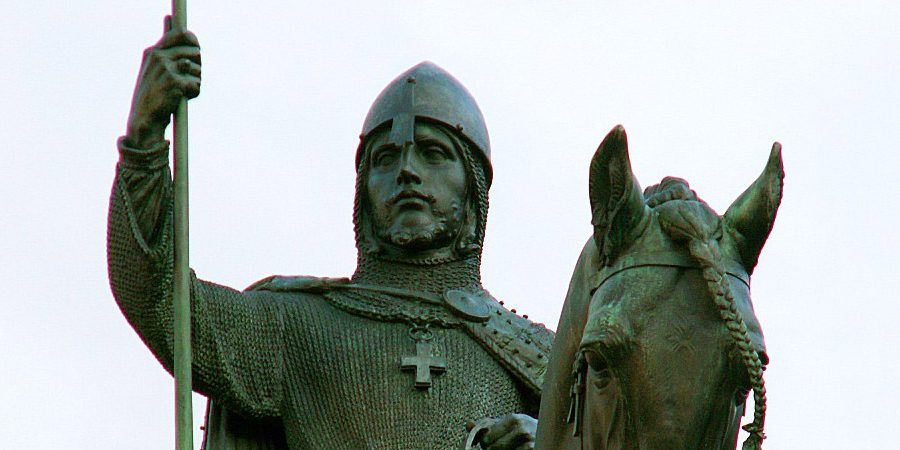The brothers Jan and Václav Fišers from Turnov. Their alleged voyage to Venice, five years of efforts to seize the local secret of secrecy, return to Turnov, dozens of wasted attempts and then - finally success! In 1711 they made the first glass for the production of artificial stones.
It was in 1712, when Elias Müller built his glassworks on the estate of the Harrach Counts in Jilemnice. It continued in the traditional production of glass, which was produced on the border of the Giant Mountains and the Jizera Mountains in the middle of the 14th century. Even today, you can see not only metallurgical production and blowing glass, but also a hundred-year-old grinding shop. It is driven by a water turbine and transmissions used to distribute the driving force.
Elias Palme, one of the most famous luminaire manufacturers, continued the tradition of chandeliers in Kamenický Šenov. Industrial production of chandeliers was started in 1724 by Josef Palme in Prácheň.
Surely you would not find in the whole Principle and in the broad surroundings of a person who would say a crooked word about Jan Šourek. After all, it was as if he had come to the Principle of Prosperity and Welfare. As soon as he took possession of the reeve, life in the village began to turn for the better. He was one of the first to venture into the world for business.
Josef Riedel, king of the Jizera Mountains glassmakers, was born in Hejnice in 1816. He was the representative of the sixth generation of the glass family and imprinted his footprint indelibly on the slopes of the Jizera Mountains.
Josef Pfeiffer - Jablonec entrepreneur and mayor, who was involved in the development of jewelery exports. Everything is confirmed at the imperial court and in 1866 Jablonec became a town during his reign.
People can make sense of time and numbers, but not us, beads. However, I have heard that they have been blowing me in the mountains for more than a hundred years. As a bead would put it, that is a long time. You, who have never seen how a bead is born, you don´t know how beautiful life can be....
In 1920 the first Czech glass school was founded in Železný Brod, thanks to which the town became a center of glass art.
Stories

Lusatian Mountains (Lužické hory)
- AJETO
- Association of Friends of the Chřibská Glassworks
- ASTERA
- AZ-Design
- Bartglass
- Beads NB
- Bystro Design
- Čangel Glass
- Crystal Temple
- Crystal Train - Länderbahn CZ
- Crystalex CZ
- Evpas
- Filip Lukavec
- Floriánova huť
- Glass astronomical clock - Česká Kamenice
- Glass Museum Kamenický Šenov
- Glass Museum Nový Bor
- Glassworks Jílek
- Granary Lemberk
- Hoineff glass art
- Houdek.art
- Jan Falta
- Jaroslav Skuhravý - Sklovitráž
- Jasanský František
- Kamenický Šenov: Secondary School of Glassmaking
- Kolektiv Ateliers
- Kunc Glass
- LASVIT - GLASS HOUSE
- Memory Crystal
- MOLS Bohemia
- NATĚLO
- Nativity scenes Kryštofovo Údolí
- Novotny Glass
- Nový Bor: Higher Vocational School of Glass and Secondary School
- Pačinek Glass
- Pískovačka
- Preciosa Lighting
- Prousek exklusive lighting
- Studio VINU
- Svojkov Glassworks, Jiří Haidl
- TGK - Technology, Glass and Art
- Trishards
- Vagnerglass
- Vladimir Klein
- Vydry studio
Giant Mountains (Krkonoše)
Jizera Mountains (Jizerské hory)
- AG Plus
- Arcon Bijoux / Collegium Trade
- ArtCrystal Tomeš
- Atlas Bijoux
- BEADGAME
- Bijoux Components
- CENTRUM BABYLON
- CHURCH of the Nativity of St. John the Baptist / KOSTEL Narození sv. Jana Křtitele
- Clarion Grandhotel Zlatý Lev****
- Cristali
- Crystal Paradise
- Cultural and Information Center Riedel´s Villa Desná
- Decor by Glassor
- DEELLA art & glass
- Detesk
- Drahomíra Krupková - YANI
- Evans Atelier
- FABOS
- G&B beads / Museum of Beadmaking
- Glass Beránek
- Glass Pesničák
- Glassunicum
- Hotel Ještěd
- IQLANDIA
- Jablonec nad Nisou: Secondary School of Applied Arts and Higher Vocational School
- Jablonec nad Nisou: Secondary School of Crafts and Services
- Ještěd - LASVIT Trail
- Lucid
- Marcela Růžičková
- Martin Gőrner, Lusatian Glas LsG
- Martina Josífek - Glass Art
- Museum of Glass and Jewellery in Jablonec nad Nisou
- MUZA ׀ North Bohemian Museum in Liberec
- Nisa Factory
- Perlex Bijoux Jablonec
- PETRA LORENC
- Pralinqa
- Preciosa Beauty
- Preciosa Ornela Desná
- Preciosa Ornela Zásada
- Ralton
- SALANSKY & Co., s.r.o.
- Spider Glass
- VITRUM - GLASSWORKS JANOV NAD NISOU
Bohemian Paradise (Český ráj)
- Čambalová Pavlína
- City Museum in Železný Brod
- CRAFT ALLEY TURNOV
- Crystal Train - Arriva
- Detesk Museum and Gallery
- Galerie Granát
- Glass Dáša
- Glass Studio Oliva - Oliva Glass
- Halama Glass
- Hela Glass
- JAROŠ - Glass Works
- JEWSTONE
- Jiřina Tauchmanová
- Kamila Parsi
- Ladislav Ševčík Bohemia Crystal
- Lhotský
- Mimoosa
- MINIMUSEUM OF GLASS CHRISTMAS NATIVE SCENES
- MISAMO
- Museum and Gallery in Železnice
- Museum of the Bohemian Paradise in Turnov
- Sobotka - figurines
- Stefany jewelry
- Turnov: Secondary School of Applied Arts and Higher Vocational School
- UMYO GLASS
- Wranovsky Crystal
- Železný Brod: Secondary School of Glassmaking

About us
-
ARR - Agentura regionálního rozvoje, spol. s r.o.
Křišťálové údolí / Crystal Valley, ředitel: Lukáš Zmatlík
+420 731 269 231
IČ: 48267210
DIČ: CZ48267210
ID datové schránky: njmndgs
Spisová značka: C 4305 vedená u Krajského soudu v Ústí nad Labem
- email: info@crystalvalley.cz
-
tisk / media:
Lucie Fürstová
l.furstova@arr-nisa.cz
+420 605 150 600







